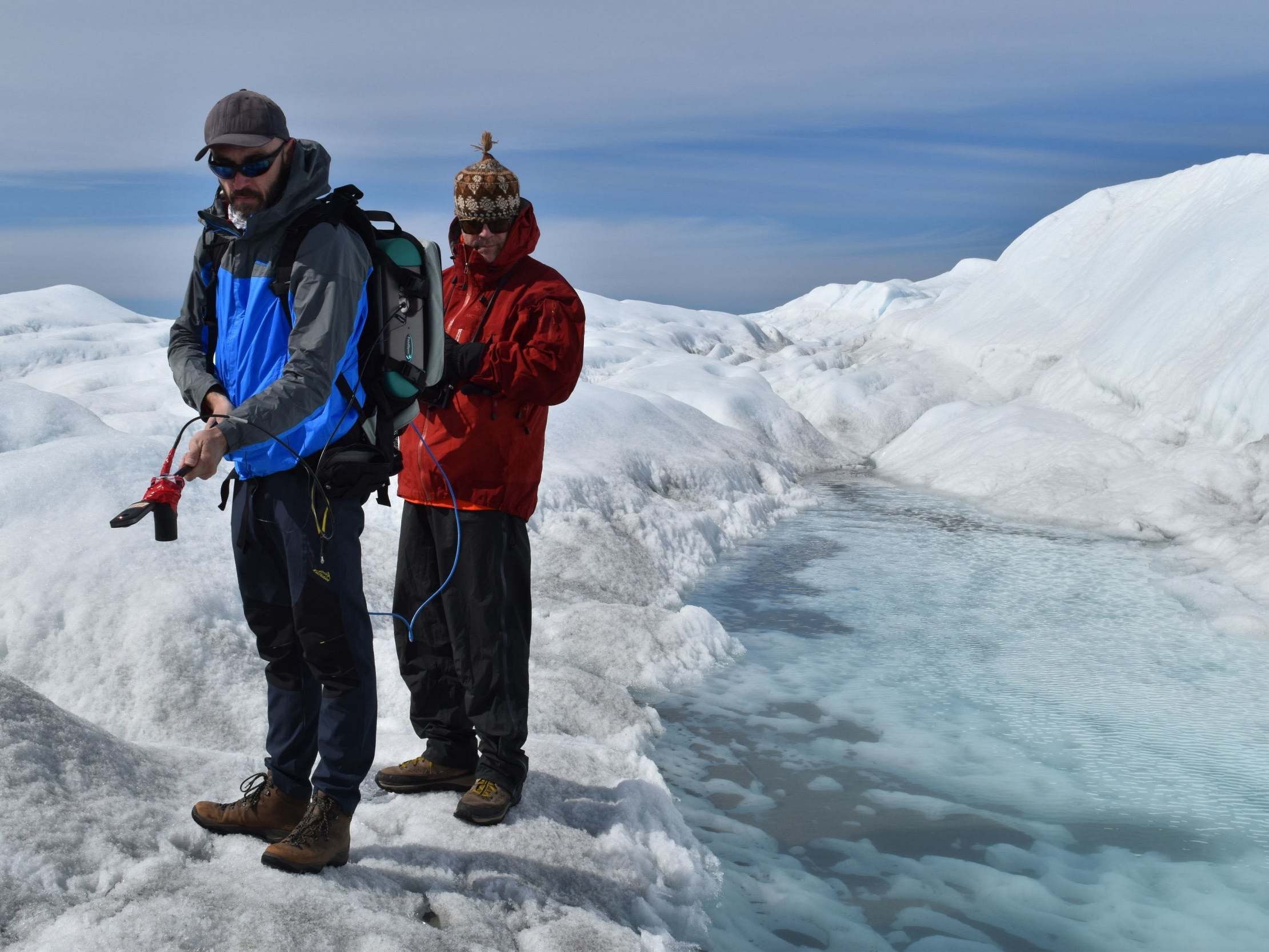This website uses cookies so that we can provide you with the best user experience possible. Cookie information is stored in your browser and performs functions such as recognising you when you return to our website and helping our team to understand which sections of the website you find most interesting and useful.

Greenland’s ice sheet shrank more last year than at any time since records began in 1948, according to a new study.
The huge drop in surface mass was caused not only by warm temperatures but also atmospheric conditions that have become more frequent due to climate change, researchers found.
“We’re destroying ice in decades that was built over thousands of years,” said Marco Tedesco, research professor at Columbia University’s Lamont-Doherty Earth Observatory, who led the study. ”What we do here has huge implications for everywhere else in the world.”
Greenland’s ice sheet – the second largest in the world – covers 80 per cent of the island.
Last year it lost close to 600 billion tonnes of water, which would contribute about 1.5 millimetres to the rise in global sea levels, according to the study published in The Cryosphere.
Created with Sketch.
Created with Sketch.
1/22
Getty Images
2/22
Getty Images
3/22
Getty Images
4/22
Getty Images
5/22
Getty Images
6/22
Getty Images
7/22
Getty Images
8/22
Getty Images
9/22
Getty Images
10/22
Getty Images
11/22
Getty Images
12/22
Getty Images
13/22
Getty Images
14/22
Getty Images
15/22
Getty Images
16/22
Getty Images
17/22
Getty Images
18/22
Getty Images
19/22
Getty Images
20/22
Getty Images
21/22
Getty Images
22/22
Getty Images
1/22
Getty Images
2/22
Getty Images
3/22
Getty Images
4/22
Getty Images
5/22
Getty Images
6/22
Getty Images
7/22
Getty Images
8/22
Getty Images
9/22
Getty Images
10/22
Getty Images
11/22
Getty Images
12/22
Getty Images
13/22
Getty Images
14/22
Getty Images
15/22
Getty Images
16/22
Getty Images
17/22
Getty Images
18/22
Getty Images
19/22
Getty Images
20/22
Getty Images
21/22
Getty Images
22/22
Getty Images
It has already contributed between 20 and 25 per cent of the rise in global sea levels in the last few decades – and could raise global sea levels by up to 23 feet if it melted entirely.
The study also suggests that scientists may be underestimating the threat to the ice and the potential rise in global sea levels.
Most models used to project Greenland’s future ice loss do not capture the impact of changing atmospheric circulation patterns, which professor Tedesco described as a “wavier jet stream”.
“It’s almost like missing half of the melting,” he added.
In Greenland’s case this saw high-pressure conditions preventing the formation of clouds, letting in more sunlight and resulting in much less snowfall than usual.
It follows research published last month that showed the polar ice caps and the Greenland ice sheet are melting six times faster than they were in the 1990s.
The high melt rate corresponds to the “worst case scenario” model for global warming set out by the Intergovernmental Panel on Climate Change (IPCC), which projected that sea levels could rise by as much as one metre by 2100 if greenhouse gas emissions keep climbing.
That would put hundreds of millions of people at risk of flooding and could change ocean salinity, which can disrupt marine ecosytems.
Additional reporting by agencies



 Africana55 Radio
Africana55 Radio 

